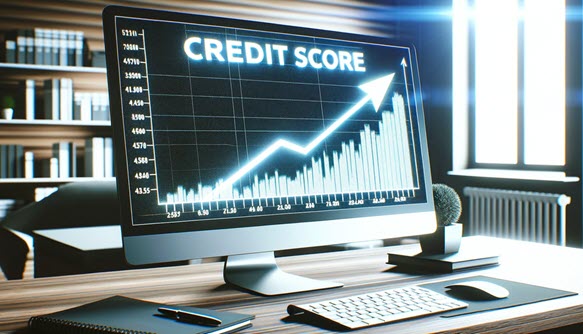
Understanding Bankruptcy and its Impact on Credit Score
Bankruptcy is a legal process that provides individuals or businesses with an opportunity to eliminate or repay some or all of their debt under the protection of federal bankruptcy courts [3]. There are several types of bankruptcy, with Chapter 7 and Chapter 13 being the most common for individuals.
Filing for bankruptcy, however, can have a profound impact on your credit score. A bankruptcy filing can cause a drop in your credit score by between 160 and 240 points, depending on the type of bankruptcy filed.It is also worth noting that a bankruptcy or foreclosure can stay on your credit report for up to 7-10 years.
Financial Management Post-Bankruptcy
After filing for bankruptcy, it is crucial to start building a strong financial foundation.One of the first steps in this direction is to create a budget to manage expenses and avoid overspending. This involves categorizing expenses into fixed, variable, and irregular categories to identify areas where you may be overspending.
Building an emergency fund is another essential step to avoid resorting to high-cost loans in the event of unexpected expenses. Such a fund acts as a financial safety net, reducing reliance on credit.Equally important is to be proactive and track every dollar spent, which can help maintain financial discipline and identify areas for improvement.
Steps to Rebuild Credit After Bankruptcy
Rebuilding your credit after bankruptcy involves a multi-step process. As mentioned earlier, it starts with creating a new budget to manage expenses and avoid overspending. Setting aside a portion of each paycheck for savings also forms an integral part of this process, as it helps establish a financial safety net.
To begin rebuilding your credit, consider applying for credit products designed for those with a bankruptcy, such as secured loans, credit-builder loans, or secured credit cards. These specialized credit products provide opportunities to rebuild credit in a responsible manner.
Regularly checking your credit reports ensures the accuracy of information and allows for the timely resolution of any errors. Additionally, monitoring your credit score helps gauge your progress and identify areas for improvement.
Utilizing Secured Credit Cards and Loans to Rebuild Credit
Secured credit cards can be a particularly effective tool for rebuilding credit after bankruptcy.These cards require a cash deposit as collateral, providing an opportunity to establish or rebuild credit. Credit-builder or secured loans, which allow you to build a credit history through responsible repayment, are another viable option.
However, while considering these options, beware of high fees associated with some secured credit cards. Always research and choose a card with low or no fees.
Additional Strategies for Rebuilding Credit
Several additional strategies can be employed to rebuild credit. You could consider becoming an authorized user on someone else’s credit card. In this case, their positive payment history can help improve your credit.
If you’re having trouble qualifying for a loan or credit card, consider having someone with good credit co-sign your application. Also, reporting rent and utility payments to credit bureaus can demonstrate responsible payment behavior and help boost your credit score.
Developing good debt management habits, such as repaying more than the minimum payment on credit cards and keeping credit card balances below 30% of your total credit limit, also contributes to a positive credit history.
Seeking Professional Help and Long-term Credit Improvement
In some cases, working with a reputable credit counseling agency can provide guidance and assistance in managing debt and rebuilding credit. It’s important to remember that rebuilding credit takes time. However, improvements can be observed in as little as one to two years after a bankruptcy discharge. To establish a good credit history, stay proactive and committed to consistent financial responsibility.
Consider Signing Up for a Authorized User Tradeline
An authorized user tradeline offers an individual the unique advantage of piggybacking on the credit history of another person’s established account. By becoming an authorized user, one can benefit from the primary account holder’s credit habits without bearing the responsibility of managing the account or making payments. This can be particularly advantageous for individuals aiming to build or repair their credit. When the primary account holder maintains a positive payment history and keeps their credit utilization low, the authorized user can see an improvement in their own credit score. Additionally, being added as an authorized user can provide a broader mix of credit types in one’s credit report, further enhancing their creditworthiness in the eyes of lenders.
Conclusion
Rebuilding credit after bankruptcy is a crucial step towards achieving long-term financial health. By employing the strategies discussed in this article, you can make significant strides in improving your credit score and securing a stable financial future.


